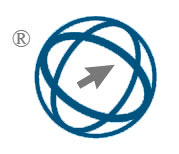Optimized Artificial Neural Network with Improved Sparrow Search Algorithm for Predicting Bandgap and Stability of A2B 1+B 3+X6 Perovskites
Abstract
With the rapid development of solar power generation technology, chalcogenide battery materials are becoming more and more important. However, there are many combinations of chemical formulae for chalcogenide materials, and the traditional calculation methods are too costly in terms of labor and time. Therefore, an artificial neural network-based prediction model for the band gap and stability of halogenated double chalcogenide (A2B 1+B 3+X6) is proposed in the study. The structural features of the material are extracted using the Voronoi diagram method. The sparrow search algorithm is improved by using the chaotic number generator, stochastic difference variant, dynamic allocation strategy, and nonlinear inertia factor. The number of algorithmic populations is set to 50. The maximum and minimum values of the ratio of discoverers and joiners are 3:7 and 1:9 respectively. The learning factor is 1 and the warning value is 0.5. The improved algorithm is used to optimize the artificial neural network. Experiments show that the optimal fitness value of the improved algorithm is 145, 128, and 53 lower than that of GBR, SVR, and XGBoost, and the running time is 0.035 s, 0.127 s, 0.022 s, and 1.212 s lower than that of GBR, SVR, and XGBoost respectively, indicating that the improved algorithm performs better in optimization problems. The root mean square error is 0.053, which is lower than SSA, GBR, SVR, and XGBoost algorithms by 0.036, 0.019, 0.101 and 0.038 respectively. The mean absolute error and root mean square error of the model are 0.0217 and 0.0354 lower than that of the XGBoost model, respectively, and the coefficient of determination is 5.46% higher. The mean absolute error and root mean square error distributions of the model are lower than that of the XGBoost model by 0.0217 and 0.0354, and the coefficient of determination is higher by 5.46%. The six A2B 1+B 3+X6 mines selected for the study meet the requirement of band gap between [1.3, 1.4], the band gap prediction error between [-0.047, 0.009], and the stability indexes of five of the materials meet the requirement of less than 0.05. It can be concluded that the study can effectively improve the screening speed of chalcogenide materials, reduce the screening cost, and provide more promising new materials for solar power generation
Full Text:
PDFReferences
ReferenceS
De Angelis F. The impact of machine learning in energy materials research: The case of halide perovskites. ACS Energy Letters, 2023, 8(2): 1270-1272.
Mannodi-Kanakkithodi A, Chan M K Y. Accelerated screening of functional atomic impurities in halide perovskites using high-throughput computations and machine learning. Journal of Materials Science, 2022, 57(23): 10736-10754.
Yang C, Chong X, Hu M, Yu W, He J, Zhang Y, & Wang L W. Accelerating the discovery of hybrid perovskites with targeted band gaps via interpretable machine learning. ACS Applied Materials & Interfaces, 2023, 15(34): 40419-40427.
Howard J M, Wang Q, Srivastava M, Gong T, Lee E, Abate A, & Leite M S. Quantitative predictions of moisture-driven photoemission dynamics in metal halide perovskites via machine learning. The Journal of Physical Chemistry Letters, 2022, 13(9): 2254-2263.
Biswas M, Desai R, Mannodi-Kanakkithodi A. Screening of novel halide perovskites for photocatalytic water splitting using multi-fidelity machine learning. Physical Chemistry Chemical Physics, 2024, 26(35): 23177-23188.
Yang J, Mannodi-Kanakkithodi A. High-throughput computations and machine learning for halide perovskite discovery. MRS Bulletin, 2022, 47(9): 940-948.
Hu W, Zhang L, Pan Z. Designing two-dimensional halide perovskites based on high-throughput calculations and machine learning. ACS Applied Materials & Interfaces, 2022, 14(18): 21596-21604.
Zhao J, Wang X. Screening perovskites from abo3 combinations generated by constraint satisfaction techniques using machine learning. ACS omega, 2022, 7(12): 10483-10491.
Wu Y, Wang C F, Ju M G, Jia Q, Zhou Q, Lu S, & Wang J. Universal machine learning aided synthesis approach of two-dimensional perovskites in a typical laboratory. Nature Communications, 2024, 15(1): 138-157.
Selvaratnam B, Oliynyk A O, Mar A. Interpretable machine learning in solid-state chemistry, with applications to perovskites, spinels, and rare-earth intermetallics: Finding descriptors using decision trees. Inorganic Chemistry, 2023, 62(28): 10865-10875.
Zhu Y, Zhang J, Qu Z, Jiang S, Liu Y, Wu Z, & Dai Y. Accelerating stability of ABX3 perovskites analysis with machine learning. Ceramics International, 2024, 50(4): 6250-6258.
Sharma S, Ward Z D, Bhimani K, Sharma M, Quinton J, Rhone T D, & Koratkar N. Machine learning-aided band gap engineering of BaZrS3 chalcogenide perovskite. ACS Applied Materials & Interfaces, 2023, 15(15): 18962-18972.
Mattur M N, Nagappan N, Rath S, & Thomas T. Prediction of nature of band gap of perovskite oxides (ABO3) using a machine learning approach. Journal of Materiomics, 2022, 8(5): 937-948.
Yuan S, Liu Y, Lan J, Yang W, Long H, Li W, & Fan J. Accurate dimension prediction for low-dimensional organic–inorganic halide perovskites via a self-established machine learning strategy. The Journal of Physical Chemistry Letters, 2023, 14(32): 7323-7330.
Kurani A, Doshi P, Vakharia A, & Shah M. A comprehensive comparative study of artificial neural network (ANN) and support vector machines (SVM) on stock forecasting. Annals of Data Science, 2023, 10(1): 183-208.
Santos C F G D, Papa J P. Avoiding overfitting: a survey on regularization methods for convolutional neural networks. ACM Computing Surveys (CSUR), 2022, 54(10s): 1-25.
Chen Z. Research on internet security situation awareness prediction technology based on improved RBF neural network algorithm. Journal of Computational and Cognitive Engineering, 2022, 1(3): 103-108.
Hebbi C, Mamatha H. Comprehensive dataset building and recognition of isolated handwritten kannada characters using machine learning models. Artificial Intelligence and Applications, 2023, 1(3):179-190.
Zhang J, Li C, Yin Y, Zhang J, & Grzegorzek M. Applications of artificial neural networks in microorganism image analysis: a comprehensive review from conventional multilayer perceptron to popular convolutional neural network and potential visual transformer. Artificial Intelligence Review, 2023, 56(2): 1013-1070.
Wang G, Jia Q S, Zhou M C, Bi J, Qiao J, & Abusorrah A. Artificial neural networks for water quality soft-sensing in wastewater treatment: a review. Artificial Intelligence Review, 2022, 55(1): 565-587.
DOI: https://doi.org/10.31449/inf.v49i18.7892

This work is licensed under a Creative Commons Attribution 3.0 License.









